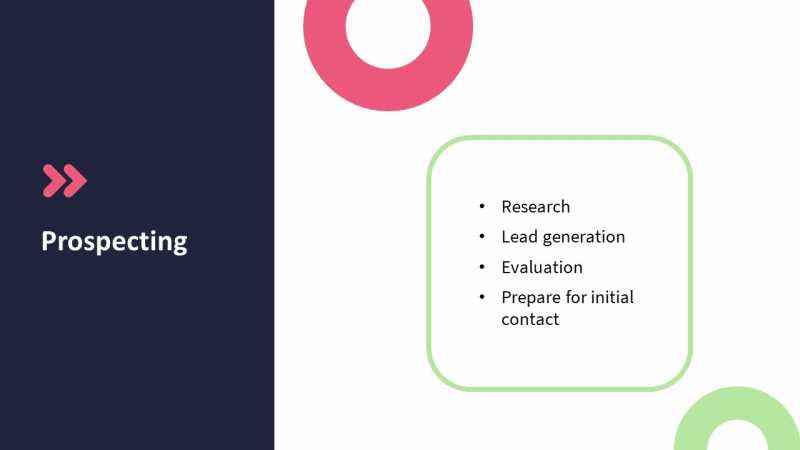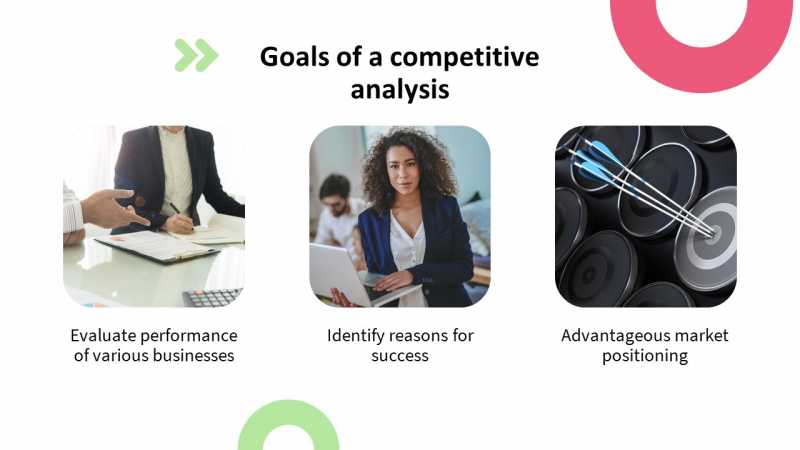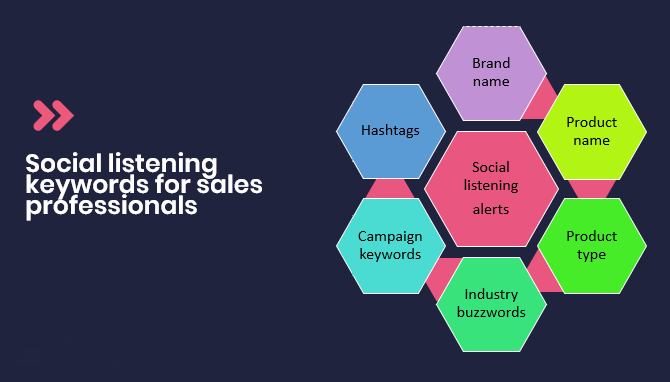
How to Become a Pro at Sales Prospecting in the 21st Century
Being a professional in is not just about closing a deal. It’s about solving a problem with your solution, yes, but it is also about making a connection with your prospect.
Most salespeople have quite a wide network of professionals from various industries, and most of the time, this is a result of them building solid relationships with their customers and prospects. The journey to finding a good customer starts with a few steps in the right direction; the aim is to maintain good prospecting habits and methods, and sooner or later, this will become your “norm”.
In our online Sales course, we cover many aspects pertaining to the sales process, and the reality is that a sales process only becomes relevant once you have someone that is interested in potentially becoming your customer. The more you prospect, the more leads you gain, resulting in not only a better pipeline but also a stronger professional network. The key is to find quality leads and to make connections with the right people, incorporate your expertise and a few techniques and methodologies along the way – then you will become a pro at prospecting. There are many research findings which prove that foundations of trust and relationships are still at the heart of selling. Keeping this in mind, along with our top tips on how to make a connection with a modern prospect, will lead you down the path to success.
What is sales prospecting?
Let’s take Wikipedia’s definition of prospecting, albeit in a different context. Wikipedia says that: “prospecting is the first stage of the geological analysis (the second being exploration) of a territory.” Now let’s translate this into a sales environment:
- We know what product we have and we have tools and methodologies to guide us.
- We (mostly) know who our ideal customers would be.
- We have a defined or undefined territory that we need to analyse in order to uncover those hidden gems.
Prospecting, essentially, is a word to describe one of the most crucial activities in sales – to actively seek out new potential customers (prospects).

Prospecting, essentially, is a word to describe one of the most crucial activities in sales – to actively seek out new potential customers (prospects). It’s the very first step in the sales cycle and definitely has influence over the sales process to follow. Approaching your prospect in the right way could determine the conversational flow going forward. The goal is to earn trust and credibility, which leads to uncovering potential challenges and opportunities, such as the type of objections you may face and the value that you should focus on.
How to understand your target audience
When approaching the market, an understanding of the various lead and buyer personas would be to your advantage. If you are able to identify what’s important to that prospect early on in the process, the conversation will progress more naturally and with a lot more meaning. Just as we want to feel understood as a customer, it is important to try and understand your prospect and their goals and challenges. Think about it this way: if you are engaging with a new prospect, and you are dealing with a financial manager, the value proposition you would pose to them would be very different to that of a buyer who is mostly focused on the user experience or the operational functionality.
That’s where it’s important to understand your types of buyers, and the typical goals and challenges each one of them faces. There are many ways to classify your buyers and your leads, including using buyer personas, but today we’ll be looking at the fundamental buyer types that typically have certain goals or challenges within their role or department:
- The economic buyer is someone who evaluates the return on investment, and other financial aspects. A good return on investment would be something to discuss with this buyer.
- The user buyer is someone that evaluates the user experience, and most of the time you will be aware of who this is, but, you also may not have that information just yet. This is a good conversation to have with your key contact; I would also recommend inviting the end-users to a presentation or meeting (this could be a separate session) to ensure that you have the “buy-in” from a user perspective. There is a great chance that a product or service won’t be utilised, or benefit the company, if the user is reluctant to use it or does not see the value. Think of yourself as an enabler through instilling the sense of embracing change, therefore your end-user’s attitude and willingness to embrace the change should be one of your important focus points.
- The technical buyer evaluates the feasibility. They tend to want to better understand whether or not the function can be fulfilled in-house, or if it would be viable from a technical or operational perspective.
- The champion is typically your key contact that wants to see your solution implemented. You should be able to recognise certain cues in their excitement about the product and the conversations that you have. Let me ask you this, is your current key contact acting as your champion? If you are not sure, I would highly recommend scheduling a strategy session with this contact and asking them about how they see this solution adding value. Also, be sure to enquire about who else in their organisation would need to be a part of the discussions or presentations. Ideally, you would want all four of these buyer types to be involved during the sales cycle, and you would want to cover all of the above-mentioned business aspects to ensure there is little room for objection or unexpected roadblocks.
Learn the Psychology of Sales
Learn how to become an unstoppable salesperson, marketer and networker.

What is competitive analysis?
Competitiveness is experienced ever so often in the day in the life of a salesperson. Whether it’s competition among your sales team, or your industry competitors knocking on the doors of your prospects and customers, the best way to overcome this challenge is to be an expert in your field. Knowledge on your own solution, your competitor’s solution, and what’s important to the prospect, will ensure that you are one step ahead of the rest.
Now that you know who you’re looking to talk to, it’s important to know how to elevate your approach to a whole new level and stand out from your competitors. And in order to stand out from our competitors, we need to first understand the competitive environment. Doing a competitor analysis is vital to differentiate yourself, and your offering to those prospects. Through competitive analysis, you are able to:
- Evaluate the key differentiators, and performance of your business, and other businesses in a market.
- Identify the reasons that make your offering valuable to a prospect.
- Position yourself and your offering in a more advantageous way.

When doing a competitive analysis, these are some key aspects that you should analyse:
- Demand for your product or service in the market.
- Market size – do you need to start looking at new territories or verticals?
- The location of your business may be important – depending on your offering.
- Your pricing, as well as your competitor’s pricing, is a key factor to analyse. I would like to add though, that contrary to popular belief, price is not always the deciding factor.
- Market saturation – how many competitors are there?
- Economic indicators that help define your overall strategy.
A tool for doing a competitive analysis is by using the business model canvas. This was originally used for designing or redesigning a business model but remains a great way to identify key factors of how your offering and company offering differs to that of your competitors. You can download Upskillist free business model canvas template to help you in this process.
How to pitch the modern way
The sales landscape has evolved over the years, and now more than ever, salespeople need to have evolved with their customers to remain relevant, but more importantly, to remain the experts in their field. The ways and channels in which we communicate with our prospects and customers may have changed, but salespeople will also be an important part of the purchasing process, as they are the ones who help educate and guide our prospects, and ultimately, are the first ones who start to build relationships with them.
There are many modern tools and methodologies that salespeople have at their fingertips; combining these with a humanised offering, and your expertise, should make for a great purchasing experience and result in a fruitful business relationship. We are now dealing with a digitally connected and socially engaged prospect, and we need to fulfil our sales responsibilities according to this modern sales landscape, otherwise, we will be left behind.
What is social prospecting?
This is the process or activity of searching for, and engaging with, prospects using online social and communication platforms.
Why social prospecting?
According to the International Data Corporation (IDC): 75% of B2B buyers and 84% of C-level/vice president (VP) executives surveyed use social media to make purchasing decisions. And, in fact, more than half of the C-level B2B buyers that they surveyed used LinkedIn to support their purchase process. The study indicates that social networks will continue to grow in importance as purchasing tools, and that selling through trusted networks will dramatically increase your chances of success. Selling in the 21st century does have its perks, and provide the following opportunities:
- Instead of being blocked by gatekeepers, you are now able to connect with decision-makers.
- Instead of relying on cold calling, you are able to leverage warm introductions.
- Instead of being limited to internal information, you have access to a vast amount of online intelligence that you can gather.
- Instead of using your sales script over the phone, you can have relevant and meaningful conversations that allow you to build credibility and trust.
Another interesting statistic is that 89% of top sales performers say that social networking platforms, such as LinkedIn, are important in closing deals as part of their sales strategy, with 70% of sales professionals active on LinkedIn for business purposes, compared to 64% on Facebook and 43% on Twitter.
Key elements to start social prospecting
- Make sure that you are using a professional and recent profile image of yourself.
- A relevant background image (where possible) is always a great way to build your online presence.
- Be sure to use a unique and memorable headline. Instead of “Salesperson at company X”, use something similar to "Expert in X field, delivering valuable solutions in X industry".
- A powerful biography and summary of yourself, your expertise and your passion is something that will most definitely build onto your online reputation.
- Human interaction and genuine interest are vital to social selling. Yes, you are communicating digitally, but be sure to reveal your human side by small activities such as commenting on posts, congratulating any job changes and just being friendly overall in all your efforts. Remember to be genuine.
- Create social listening alerts is a great way for you to follow your prospects and what is happening in their world.
Social listening refers to tracking your social media platforms for mentions and conversations relating to your brand, product or service. This is typically used in a marketing environment but can easily be adapted to a salesperson’s everyday activities.

When practising social listening or setting up your social listening alerts, here are a few keywords and topics to listen to:
- Brand name
- Product name
- Product type
- Industry buzzwords
- Your company’s slogan
- Your competitor’s slogan
- Campaign keywords
- Branded hashtags
- Unbranded hashtags
Where do we do it?
Social prospecting can take place on many platforms. These include:
- YouTube
- Viadeo
How to effectively engage in social prospecting
Now that we know where to engage, let’s take a look at the top 10 tips for social prospecting and selling:
1. Define your target market
- List potential companies that you want to approach.
- List potential titles of the leads and prospects that you would like to connect with.
- List potential skills and/or interests that these prospects may have noted in their profile. I would recommend that you align this list with your own strengths, so if you are an expert in digital transformation then this would be a great topic to discuss with a prospect.
- LinkedIn also recommends “similar companies”, and (if you are on the Sales Navigator subscription) “similar leads”. Be sure to check these out and add them to your alerts and notifications. These recommendations mean that the characteristics of the companies are all similar (industry type/size/location etc.).
2. Connect with multiple leads
- Be sure not to only connect with decision-makers.
- Connect with people who could be considered influencers.
- Connect with multiple role types within an organisation, this way you could work towards building strong alliances with multiple prospects from one company.
3. Plan content
- Be sure to align with your marketing team.
- Request access to existing content if you do not currently have access.
- Plan out your touchpoints with prospects, and the content you will share at those touchpoints.
4. Promote your personal brand
- Promote yourself as an expert in your field.
- Share content relevant to your industry and those of your customers.
- Build credibility for your personal brand by giving feedback on any particular topics you are confident in addressing or commenting on.
5. Build a solid online foundation
- Earlier we spoke of which elements you need to work on first. You need to invest the time into building up your online profiles.
- Ensure that you have well-written biographies and experience related content (feel free to ask for help).
6. Join online groups
- There are many groups that exist relating to particular professions or industries.
- As much as you want to sell, try not to sell too much online; leads or prospects may be put off by being “sold to” and you may lose out on making that connection.
- Instead of selling, try to engage in discussions relating to your industry, product or service, or your prospects and customers' industries.
- If you are confident enough in your level of expertise, then why not create your own group?
7. Ensure that you are monitoring your network and have set notifications or alerts
- Set alerts and notifications for any industry changes (yours and your prospects’ and customers’).
- Monitor alerts and notifications for any role changes within your target companies.
- Ask your network for recommendations.
- Leverage warm introductions through your existing network. A warm introduction will definitely lead to a higher chance of success.
- LinkedIn, for example, has a fantastic feature whereby you are able to monitor activities of your prospects, as well get recommendations for similar types of prospects.
8. Have regular interactions online
- Comment on posts you feel confident commenting on.
- Like posts of your prospects often.
- Post content — not only sales material but interesting developments within your or your prospects industry.
- Share posts from your industry and your prospect's company and industry.
9. Share success stories
- Customer success stories are a great way to build credibility. If there are any existing customer success stories online that you are able to share, then share these every few months.
- Case studies that may not have been shared yet could also be useful to you. See if any of your existing customers would be open to doing a case study with you and are happy for you to share this online.
- Make sure that you are constantly interacting with prospects, as well as customers on your online profiles. Like and comment on posts to show your interest.
10. Take it offline
Well, this is the most important part of any type of prospecting or selling.
- Once you have built a rapport with the customer, ask them if they would be open to you reaching out to them via phone or email.
- Be sure to schedule an in-person meeting; it doesn’t have to be formal — it can be a simple casual coffee meeting to discuss industry trends and any recent challenges they’ve been experiencing.
- Human interaction is still considered to be one of the key elements of solid building relationships. It is when you are in front of the prospect — in your casual coffee chat — that you get to learn so much more about them and what their goals (and challenges) are.
And to further prove the point that human connections are still vital, here is an interesting statistic provided by the LinkedIn State of Sales report:
Decision-makers expect understanding and human connections. 96% of decision-makers are more likely to consider a brand’s products or services if the sales professionals have a clear understanding of their business needs.
Finally, I would like to provide you with the conclusion of the LinkedIn State of Sales report. In the conclusion, their findings were as follows:
- Today’s selling landscape comes with heightened consumer expectations and scepticism.
- It’s important to implement a modern selling strategy: tap into technology to scale, lean into marketing to align insights.
- Don’t forget that real human connections are irreplaceable.
- Top sales professionals are closing more deals on a foundation of trust, and relationships are still at the heart of selling.
To summarise
- Prospecting is not just about finding leads — there is some level of preparation and strategy required to be efficient in your prospecting activities, online and offline.
- Understanding the types of buyer, or leads that you are speaking to, will guide the way to better, more meaningful conversations.
- Matching your value proposition to an individual’s goals or priorities will get you a lot further in building the foundations of a fruitful relationship.
- Understanding your competitive environment is key to differentiating yourself when speaking to a prospect, as you need to know your competitors well and uncover opportunities that make you stand out.
- Selling to the modern customer requires a modern selling and prospecting approach.
- Most importantly, it still comes down to building a connection based on a level of trust and understanding.
Looking to sharpen your sales skills? Join our top-rated online Sales course today!



